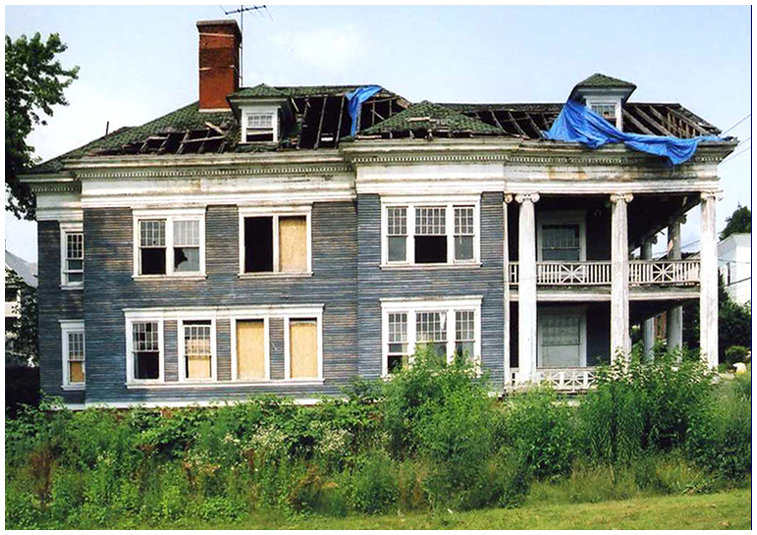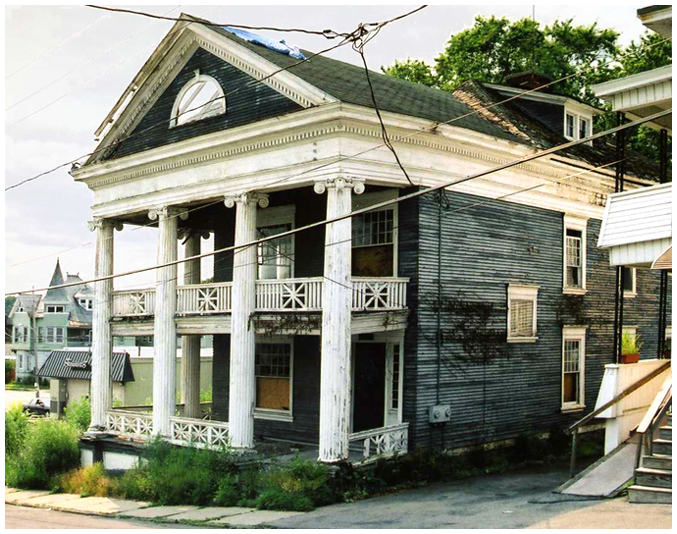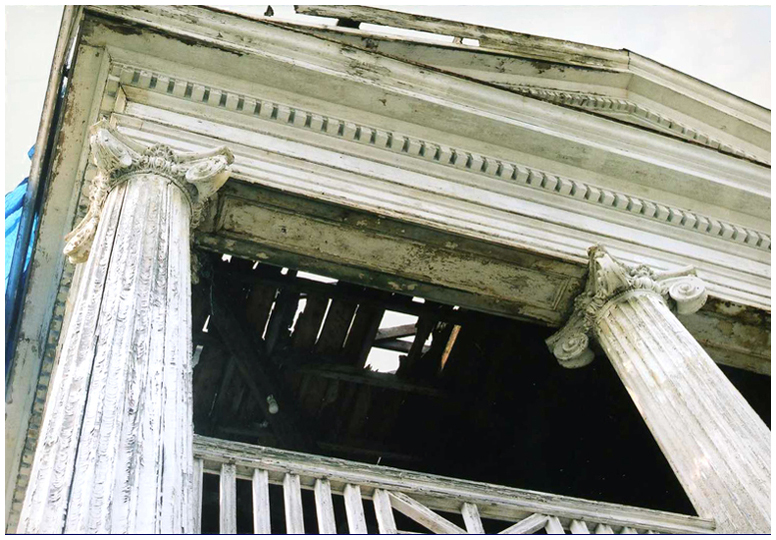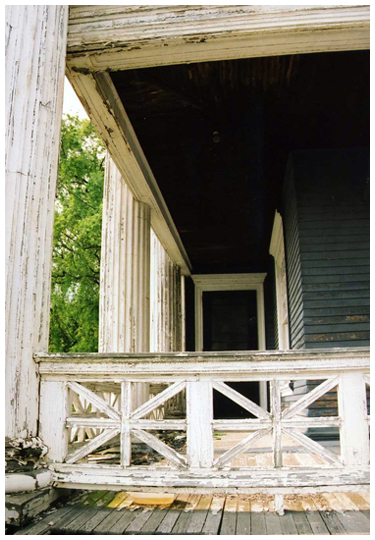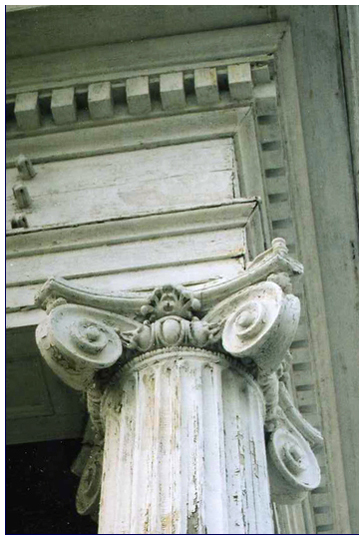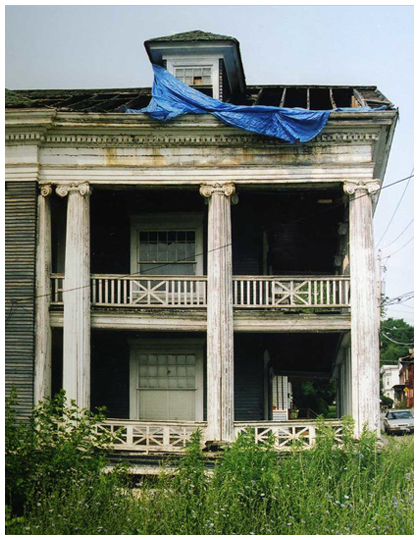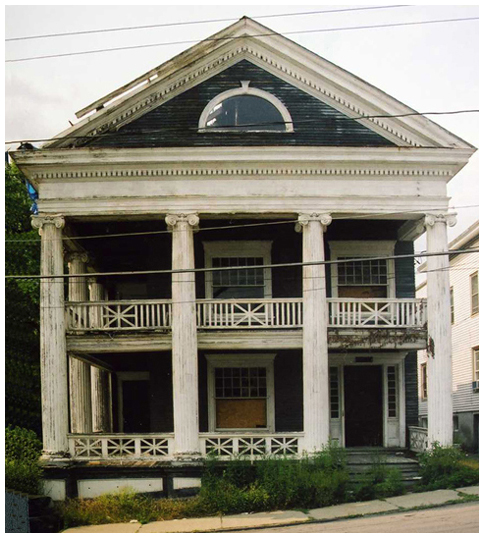In 1905, the families of mill bookkeeper A.H. Cromwell, and bank cashier Charles French lived at The Cornelia. By 1920, its residents were the families of Lucy Vanderpool, which had an independent income, and knitting mill owner Walter Yund, which was attended by a servant .
But the knitting and carpet industries were hard-hit by the depression, which sent the city's industrial base into a seemingly endless spiral of decline. By 1930, the Cornelia was owned by John and Walter Rowan, who rented out rooms to school teachers as a sideline. Over the decades, The Cornelia deteriorated along with the local economy. Eventually its promenade deck porches came to overlook the parking lot and rear wall of a Stewart's convenience store. By 2004, it had fallen vacant. Holes in its roof were visible from the street and graffiti appeared on its wall.
In 2005, hope emerged from an unexpected quarter. A housing rehabilitator began renovating the building and removed most of the decaying roof. However, the project apparently fell through at this point. Except for the flapping remnants of plastic tarps, The Cornelia has stood open to the elements for the past year.
